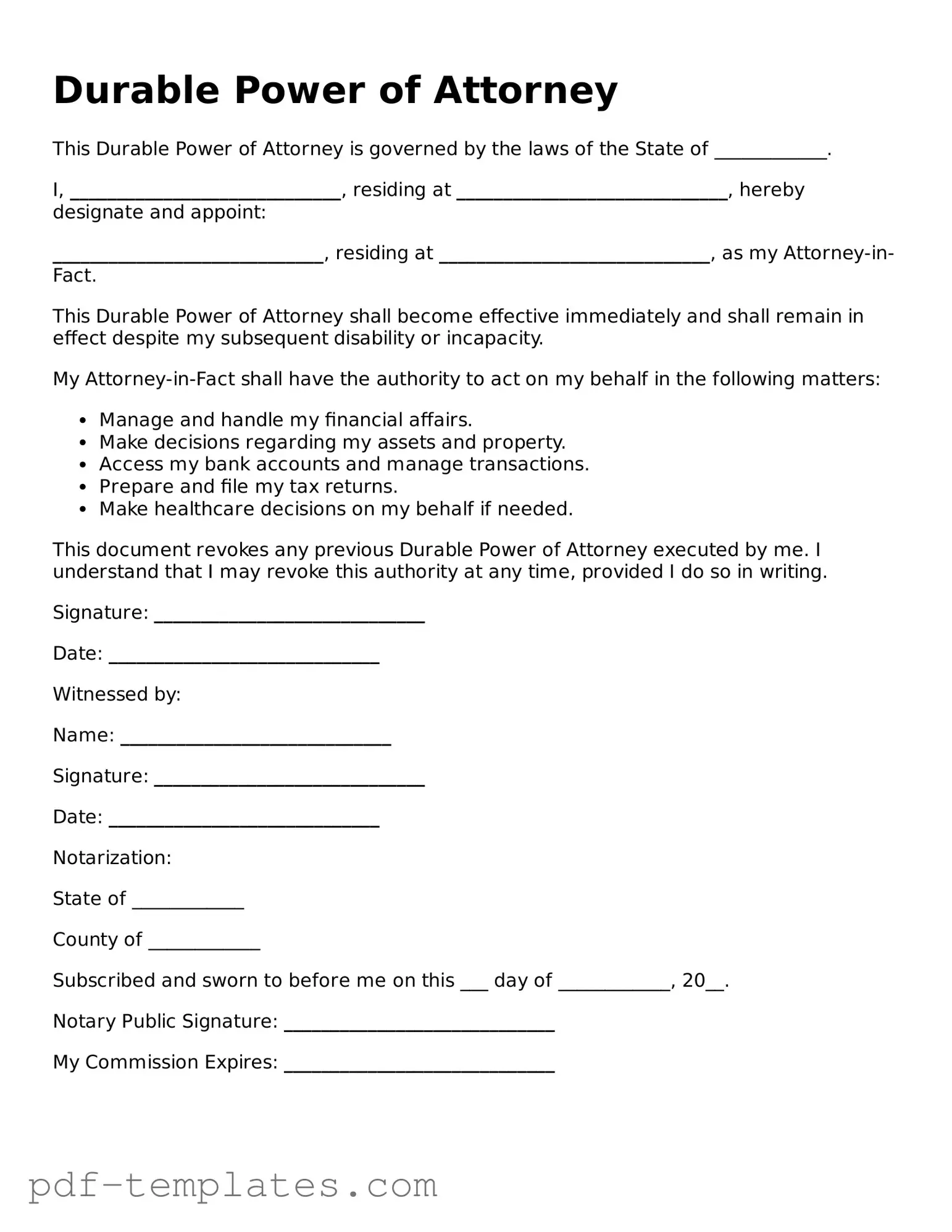The Durable Power of Attorney (DPOA) is similar to a General Power of Attorney (GPOA) in that both allow one person to act on behalf of another. However, the key difference lies in the durability of the authority granted. A GPOA typically becomes invalid if the principal becomes incapacitated, while a DPOA remains effective even if the principal can no longer make decisions. This makes the DPOA a crucial document for long-term planning, especially for those concerned about potential future health issues.
Another document that shares similarities with the DPOA is the Healthcare Power of Attorney. This form specifically grants authority to make medical decisions on behalf of someone who is unable to do so. Like the DPOA, it remains in effect even if the person becomes incapacitated. However, the Healthcare Power of Attorney focuses solely on health-related matters, whereas the DPOA can cover a broader range of financial and legal decisions.
The Living Will is also comparable to the Durable Power of Attorney, but it serves a different purpose. A Living Will outlines an individual’s wishes regarding medical treatment in situations where they cannot communicate their preferences. While the DPOA allows someone to make decisions on behalf of another, the Living Will directly expresses the individual’s own desires. Both documents are essential for ensuring that a person's wishes are respected during times of incapacity.
Similarly, a Trust can be likened to a Durable Power of Attorney in that both can manage assets and provide for someone’s financial needs. A Trust holds and manages assets for the benefit of another person, often avoiding probate. While a DPOA allows an agent to make decisions on behalf of the principal, a Trust can provide a more structured way to manage and distribute assets according to specific terms. Both documents serve to protect the interests of individuals when they can no longer manage their affairs.
Lastly, the Advance Directive is another document that shares some characteristics with the DPOA. An Advance Directive combines elements of a Living Will and a Healthcare Power of Attorney, allowing individuals to express their healthcare preferences and designate someone to make decisions for them. Like the DPOA, it remains effective during periods of incapacity. Both documents are crucial for ensuring that an individual’s healthcare choices are honored when they cannot advocate for themselves.
